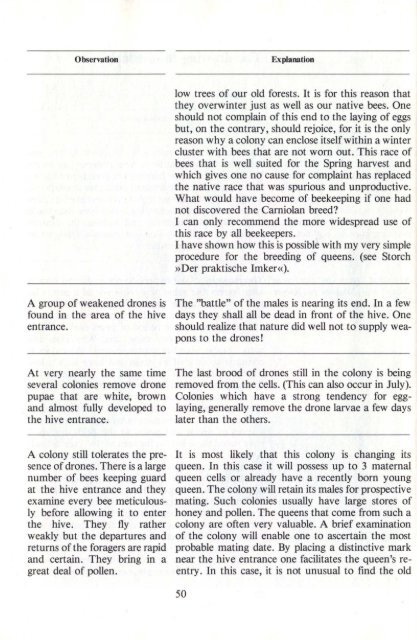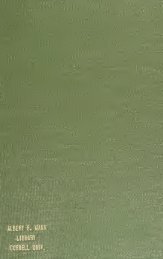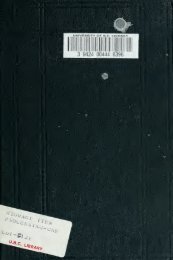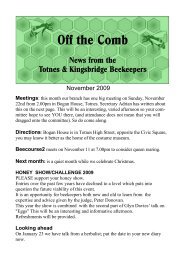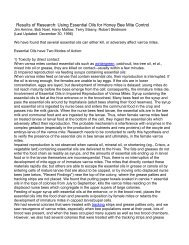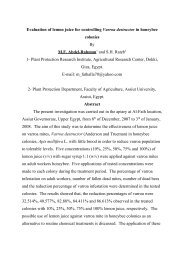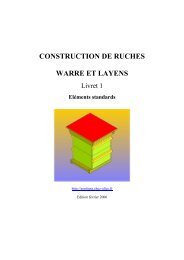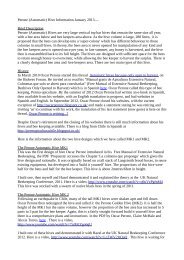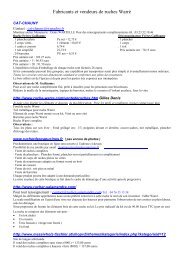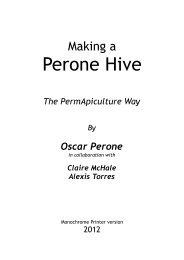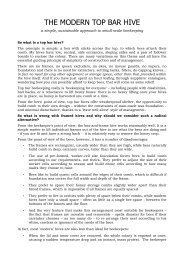You also want an ePaper? Increase the reach of your titles
YUMPU automatically turns print PDFs into web optimized ePapers that Google loves.
Observation<br />
Explanation<br />
low trees of our old forests. It is for this reason that<br />
<strong>the</strong>y overwinter just as well as our native bees. One<br />
should not complain of this end to <strong>the</strong> laying of eggs<br />
but, on <strong>the</strong> contrary, should rejoice, for it is <strong>the</strong> only<br />
reason why a colony can enclose itself within a winter<br />
cluster with bees that are not worn out. This race of<br />
bees that is well suited for <strong>the</strong> Spring harvest and<br />
which gives one no cause for complaint has replaced<br />
<strong>the</strong> native race that was spurious and unproductive.<br />
What would have become of beekeeping if one had<br />
not discovered <strong>the</strong> Carniolan breed?<br />
I can only recommend <strong>the</strong> more widespread use of<br />
this race by all beekeepers.<br />
I have shown how this is possible with my very simple<br />
procedure for <strong>the</strong> breeding of queens. (see Storch<br />
»Der praktische Imker«).<br />
A group of weakened drones is<br />
found in <strong>the</strong> area of <strong>the</strong> hive<br />
entrance.<br />
The "battle" of <strong>the</strong> males is nearing its end. In a few<br />
days <strong>the</strong>y shall all be dead in front of <strong>the</strong> hive. One<br />
should realize that nature did well not to supply weapons<br />
to <strong>the</strong> drones!<br />
<strong>At</strong> very nearly <strong>the</strong> same time<br />
several colonies remove drone<br />
pupae that are white, brown<br />
and almost fully developed to<br />
<strong>the</strong> hive entrance.<br />
The last brood of drones still in <strong>the</strong> colony is being<br />
removed from <strong>the</strong> cells. (This can also occur in July).<br />
Colonies which have a strong tendency for egglaying,<br />
generally remove <strong>the</strong> drone larvae a few days<br />
later than <strong>the</strong> o<strong>the</strong>rs.<br />
A colony still tolerates <strong>the</strong> presence<br />
of drones. There is a large<br />
number of bees keeping guard<br />
at <strong>the</strong> hive entrance and <strong>the</strong>y<br />
examine every bee meticulously<br />
before allowing it to enter<br />
<strong>the</strong> hive. They fly ra<strong>the</strong>r<br />
weakly but <strong>the</strong> departures and<br />
returns of <strong>the</strong> foragers are rapid<br />
and certain. They bring in a<br />
great deal of pollen.<br />
It is most likely that this colony is changing its<br />
queen. In this case it will possess up to 3 maternal<br />
queen cells or already have a recently born young<br />
queen. The colony will retain its males for prospective<br />
mating. Such colonies usually have large stores of<br />
honey and pollen. The queens that come from such a<br />
colony are often very valuable. A brief examination<br />
of <strong>the</strong> colony will enable one to ascertain <strong>the</strong> most<br />
probable mating date. By placing a distinctive mark<br />
near <strong>the</strong> hive entrance one facilitates <strong>the</strong> queen's reentry.<br />
In this case, it is not unusual to find <strong>the</strong> old<br />
50


